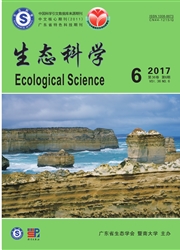

 中文摘要:
中文摘要:
通过对程海沉积岩芯摇蚊亚化石组合的分析,结合210Pb、137Cs年代测定和沉积物TOC、TN、粒度指标,探讨了近200年来程海摇蚊属种组合变化及其对湖泊环境演化过程的响应,揭示了人类活动对湖泊生态系统的影响。结果表明:1920年之前,程海营养水平较低,摇蚊属种组合以Procladius sp.为主;1920至1990年,Procladius sp.逐渐减少,而耐营养种Chironomus plumosus-type增加,营养水平上升;1990年末期后,受农业化肥使用、藻类养殖等人类活动的影响,湖泊营养水平显著增加,Procladius sp.相对丰度急剧减少,而Chironomus plumosus-type急剧增加,取代Procladius sp.成为优势种。程海近200年沉积记录研究表明1970年前湖泊的环境状态基本接近人类干扰前的状态,可作为该湖科学管理与治理的基准环境。
 英文摘要:
英文摘要:
Subfossil chironomid assemblages, and other proxies such as TOC, TN and particle size from a sediment core in Lake Chenghai are used to study the response of chironomid assemblages to the lake environment changes and infer the influences of human activities on lake ecosystem. The results show that Lake Chenghai was in low trophic level before 1920, when the chironomid assemblages were dominated by Procladius sp.. From 1920s to 1990s, the relative abundance of Procladius sp. decreased along with the increase of eutrophic indicator Chironomus plumosus-type, indicating an increasing trophic level. Since the late 1990s, due to human activities such as the use of agricultural fertilizer and alga cultivation, the trophic level has been in a phase of rapid growth. Meanwhile, the abundance of Chironomus plumosus-type has increased significantly, becoming the dominant species on top ofProcladius sp.. The 200-year record from Lake Chenghai indicates that the lake environment was nearly close to the status of pre-human disturbance before 1970, which can be considered as the reference condition for scientific management.
 同期刊论文项目
同期刊论文项目
 同项目期刊论文
同项目期刊论文
 期刊信息
期刊信息
